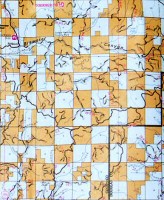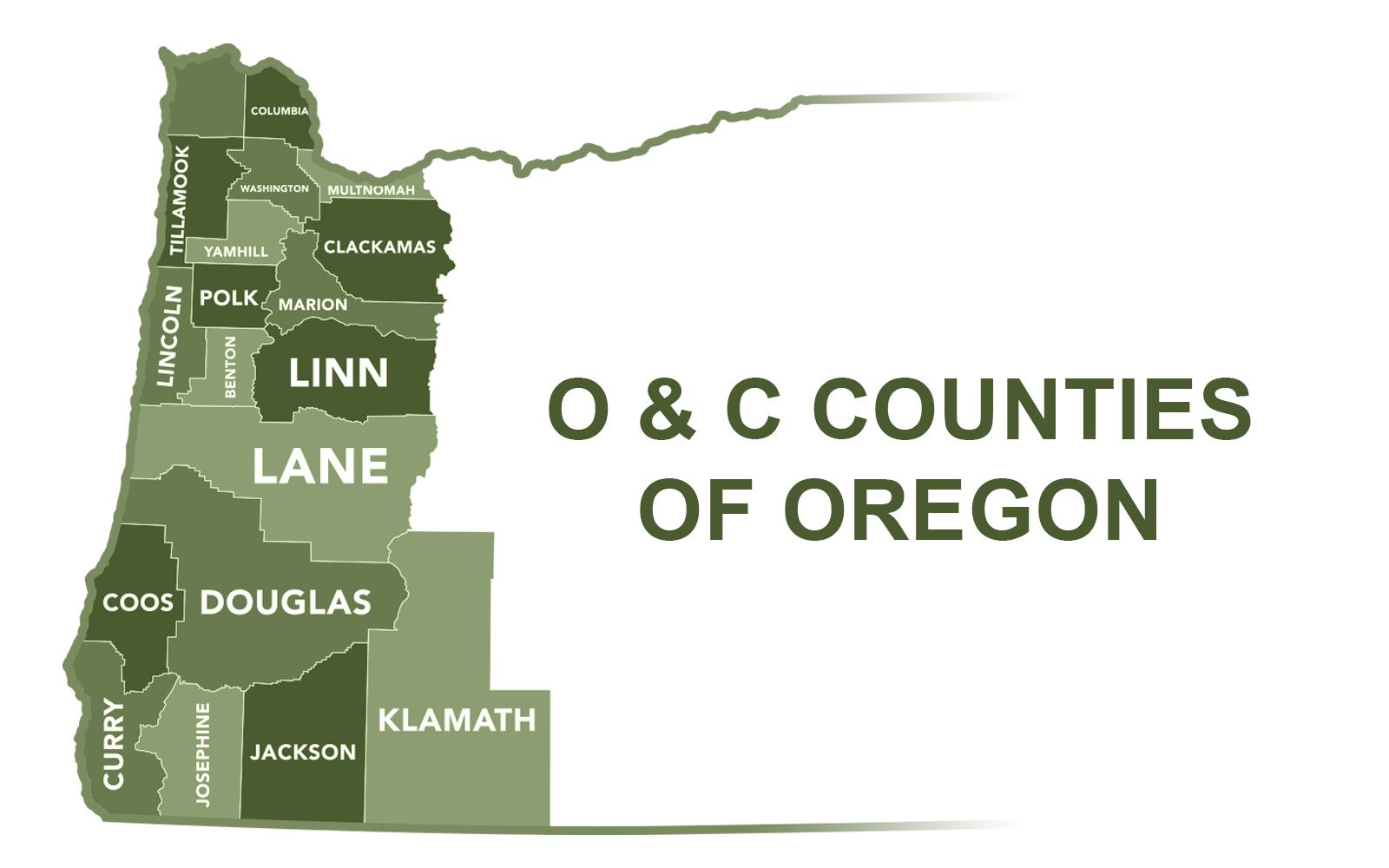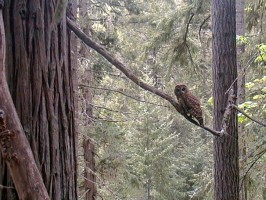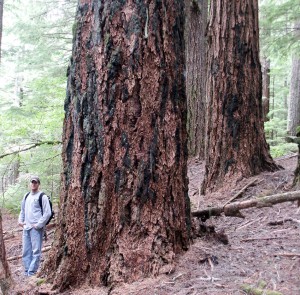
The Bureau of Land Management (BLM) manages 2.5 million acres of public forests in western Oregon. Unlike the Forest Service, the BLM managed lands are in a checkerboard ownership pattern, every other square mile switches between privately owned and publicly owned forests.
These low-elevation forests are generally in the Coast Range and Klamath Mountains, as well as some on the western flanks of the Cascade Mountains. They provide clean water and air to local communities, homes for endangered wildlife, and world-class recreation opportunities. They also contribute to local economies by encouraging small businesses to take root in these beautiful areas, as well as by providing wood products to local mills.
Recent scientific studies have found that these BLM-managed temperate rainforests have the potential to sequester more carbon than virtually any other forests in the world, including tropical rain forests — BUT — only if they are not logged.
History
The checkerboard pattern of our public forests stem from the late 1800’s when the federal government offered land distribution schemes to settle the West. This included a railroad land grant of every other square mile in a 40-mile wide swath of land stretching from Portland to the California border, which was awarded to the Oregon and California Railroad Company. Thus, these lands are referred to today as “O&C lands”.

To fund the building of public transportation the lands were sold, with stipulations: in 160-acre blocks for no more than $2.50 an acre to bona fide settlers. Concurrently federal lands in the new state of Oregon were being surveyed to establish township, range and section lines. As each township/range survey was complete, the land was opened for purchase, homesteading, or other means of distribution to settlers.
But the whole process, including the selling of O&C lands, had quickly became corrupt. The railroad company rounded up individuals from places like Portland saloons and paying them to act as settlers. They would then re-sell these fraudulent claims in large blocks to corporate interests. This same scheme was also the cause of Oregon losing most of their “common school fund” lands to fraud.
In 1903 The Oregonian reported that more than 75% of the federal land sales were illegal. In 1904-1908 the famous ‘land fraud trials’ took place. Over 1,000 people were indicted, including politicians, businessmen, railroad executives, and land surveyors. Many were tried, convicted and sent to jail. Then in 1916 the U.S. Congress passed the Chamberlin-Ferris Act which returned all unsold O&C railroad lands, about 2.5 million acres, back to the federal government.
The O&C Act
In 1937, congress passed the O&C Act, placing the O&C lands under the management of the General Lands Office, which later became the Bureau of Land Management, and gaving management direction. In fact, in an era of wasteful cut and run logging practices, the O&C Act was a landmark environmental law for its time.
The O&C Act requires O&C lands to be managed:
…in conformity with the principal of sustained yield for the purpose of providing a permanent source of timber supply, protecting watersheds, regulating stream flow, and contributing to the economic stability of local communities and industries, and providing recreational facilities…
The 1937 O&C act also devised a payment strategy (since modified) so that 50% of gross timber receipts are given to the counties in lieu of property taxes. While 50% of the gross timber receipts provided a reasonable amount of money to the counties in 1930’s and 40’s, as the value of logging increased, it soon made the counties and the timber industry strong allies. The more the timber industry cut, the more money the counties made, and the richer industry became.

By 1988, out of 2.5 million acres, there were only 348,000 acres of old-growth forests (over 200 years old) remained standing. Old-growth dependent species were rapidly declining toward extinction. In 1990 the Northern spotted owl was protected under the Endangered Species Act, and in 1992 the marbled murrelet was declared a threatened species. Coho salmon, another old-growth dependent species, is also threatened.
Northwest Forest Plan of 1994
Endangered Species Act protections for wildlife resulted in the 1994 Northwest Forest Plan that now governs management of both Forest Service and BLM. To help compensate for the past over-cutting, the Northwest Forest Plan designated about 80% of O&C lands (1.3 million acres) as reserves to protect wildlife. Unfortunately, about 45% of the reserves on BLM lands had already been clearcut before they were reserved, and are now recovering tree farms.

The 1994 logging reduction caused the flow of money to the counties to be greatly reduced. To make up the difference, the federal government severed the tie between logging volume and county payments by providing money directly to the counties in programs such as the “Secure Rural Schools and Community Self-Determination Act”. For a while this provided the counties what they had earned from the most lucrative years of O&C logging. For example, Douglas County received $29,236,221 in 2006. Congress has since reduced payments and threatens to end the program completely in 2013.
It is interesting to note that the payment to counties started in 1937 because the counties could not collect property taxes on federal lands. But if the O&C lands were taxed the same as industrial forest lands, the counties would only get about $8 million annually.
Western Oregon Plan Revisions (“WOPR”)
Counties For two decades, commercial logging interests and the BLM have been working together to increase logging levels on these O&C forests. The various iterations of this plan have been referred to as the Western Oregon Plan Revisions (or “WOPR”) which aimed to reduce protections for a number of public values these forests provide and increase clearcutting of older forests that enjoyed protections under the Northwest Forest Plan.
Cascadia Wildlands and a large group of allies, represented by our friends Western Environmental Law Center and Earthjustice, repeatedly challenged these efforts in court. Combined with massive public pressure campaigns, the legal efforts to reduce forest protections on BLM lands were halted until recently.
In 2016, the BLM released another plan revision, which was referred to as WOPR Jr. This plan again aimed to drastically reduce forest protections to increase the amount of logging in these forests. Specifically, this plan aimed at increasing logging in areas next to streams and rivers and in forests just beginning to mature into endangered species habitat, generally between 80 and 140 years in age. Overall, the plan would increase logging levels by 37%. Again, Cascadia Wildlands and our partners challenged WOPR Jr. in court, but our challenge was rejected by the Ninth Circuit.
The BLM has begun rolling out projects under this 2016 plan, and as feared, they target much-loved mature and old-growth forests, and Cascadia Wildlands has stepped up to challenge these projects. The individual logging projects being challenged are ever-changing and numerous, but an early example of our case against the Thurston Hills timber sale. If you are interested in getting involved in our efforts to field check, monitor, and comment on these projects, please join our WildCat team!
